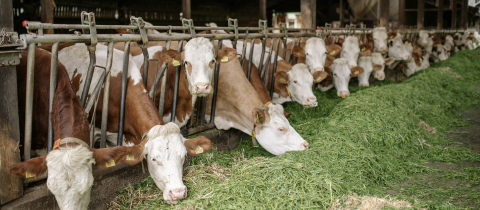Never has “Happy Birthday” been sung with such frequency. Two stanzas are just about the right length of time, about twenty to thirty seconds, for a proper hand wash. And we should be washing. After all, it is an evidence-based procedure! Studies have shown that hand washing is very effective at slowing the transmission of microbial infections. In the case of viruses, the entry into the body is through the mouth, nose or eyes, and that is most likely to happen by touching the face with contaminated hands. Soapy water washes away microbes very effectively, better than just water. That because our skin is coated with sebum, a mixture of fatty materials that prevent dryness by inhibiting the evaporation of moisture from the skin. But viruses can embed themselves in this fatty layer, and since water and fat do not mix, rinsing with water is ineffective. However, soap is a “surfactant,” a molecule that has a water-soluble end and an oil-soluble end. One end gets anchored in oil, the other in water, allowing oily deposits and whatever they may contain to be rinsed away.
So the next question. What type of soap should we use? Liquid or bar? As far as cleaning action goes, it doesn’t make a difference. But from an environmental point of view, bar soap wins. The liquid version requires a plastic bottle and that takes more energy to produce than the wrapping of a bar of soap. The container is also usually made of recyclable (yet often doesn't get recycled) high-density polyethylene (HDPE), which requires petroleum or natural gas for production. Furthermore, water makes up most of liquid soap, making it heavier and requiring more energy to transport. Calculations show that the carbon footprint of liquid soap is about 25% greater than that of bar soap.
In actuality, "liquid soap” is actually not a soap but a “synthetic detergent” that was originally developed for laundry purposes. Like soap, it has a water-soluble and an oil-soluble end, but unlike bar soap, it does not leave behind a scum, which is a precipitate that forms when soap reacts with calcium or magnesium minerals found in hard water. On average, people use about 2.3 grams of liquid soap to wash their hands but only about 0.35 grams of a bar soap. This means greater use of raw materials and more processing and more carbon dioxide emissions. On the other hand, more hot water is used with bar soap. Bar soap also has a downside in that the raw material is usually a vegetable fat, such as palm or olive oil (that’s where “Palmolive” gets its name), so that agricultural chemicals and land use have to be taken into account.
All in all, it seems that bar soap wins, even when it comes to pricing. It costs about ten times as much to wash your hands with liquid soap than bar soap. There are stories circulating about bar soap harbouring bacteria, however, a study has shown that after subjects washed their hands with a bacteria-laced bar of soap laced, none could be detected as a residue on their hands. All the bacteria had washed away with the soap.
Of course, these days with the concern about the coronavirus, the important thing is not whether to wash with liquid or bar soap, but to wash hands frequently! And just as important, to dry them well after! That is critical because moist hands are much more likely to pick up microbes from a surface. Electric hand driers can be effective but in general, people don’t use them long enough to dry their hands completely. Paper towels are a much better option. Not only because they can dry your hands better but you can also then use them to close the faucets and touch the doorknob just in case the person before you had failed to practice safe handwashing techniques.
And don’t forget that the virus can stay viable on surfaces, although at this point it isn’t clear for how long because the virus is new and we don’t have the relevant data. Judging by the behaviour of other corona viruses, it can be anywhere from a couple of hours to days, depending on the type of surface and the temperature. On a metal surface that has been touched by contaminated hands, the virus can probably live for about two hours. On plastic or fabric, longer. Still, going by what is known about other viruses, transmission via touching a surface is far less likely than via coughing or sneezing. Transmission via contact with fecal matter from an infected person is also a possibility.
Again, judging by other viruses, common disinfectants should inactivate the virus on surfaces providing the contact time is long enough. The key ingredients to look for in commercial sprays are hydrogen peroxide or calcium hypochlorite, which are shown to be effective against viruses, as are wipes treated with quaternary ammonium salts such as benzalkonium chloride or benzethonium chloride. Keep in mind that a surface should not be dried immediately after applying the disinfectant.
If you get sick of singing Happy Birthday as you are rubbing your hands with soapy water, I have a suggestion. My favourite is “Rubber Duckie”, as sung by Sesame Street's Ernie. It’s about a minute and a half so that will ensure your hands are really free of the coronavirus. As a public service, here's a clip:
Take-home message:
- Hand washing is just as effective whether using liquid soap or bar soap
- The type of surface has an effect on the viability of the virus
- Be sure to dry your hands well after washing them. Paper towels are better than air dryers
- Look for hydrogen peroxide or calcium hypochlorite in commercial sprays and benzalkonium chloride or benzethonium chloride in wet wipes.
- After disinfecting a surface, do not dry it immediately







